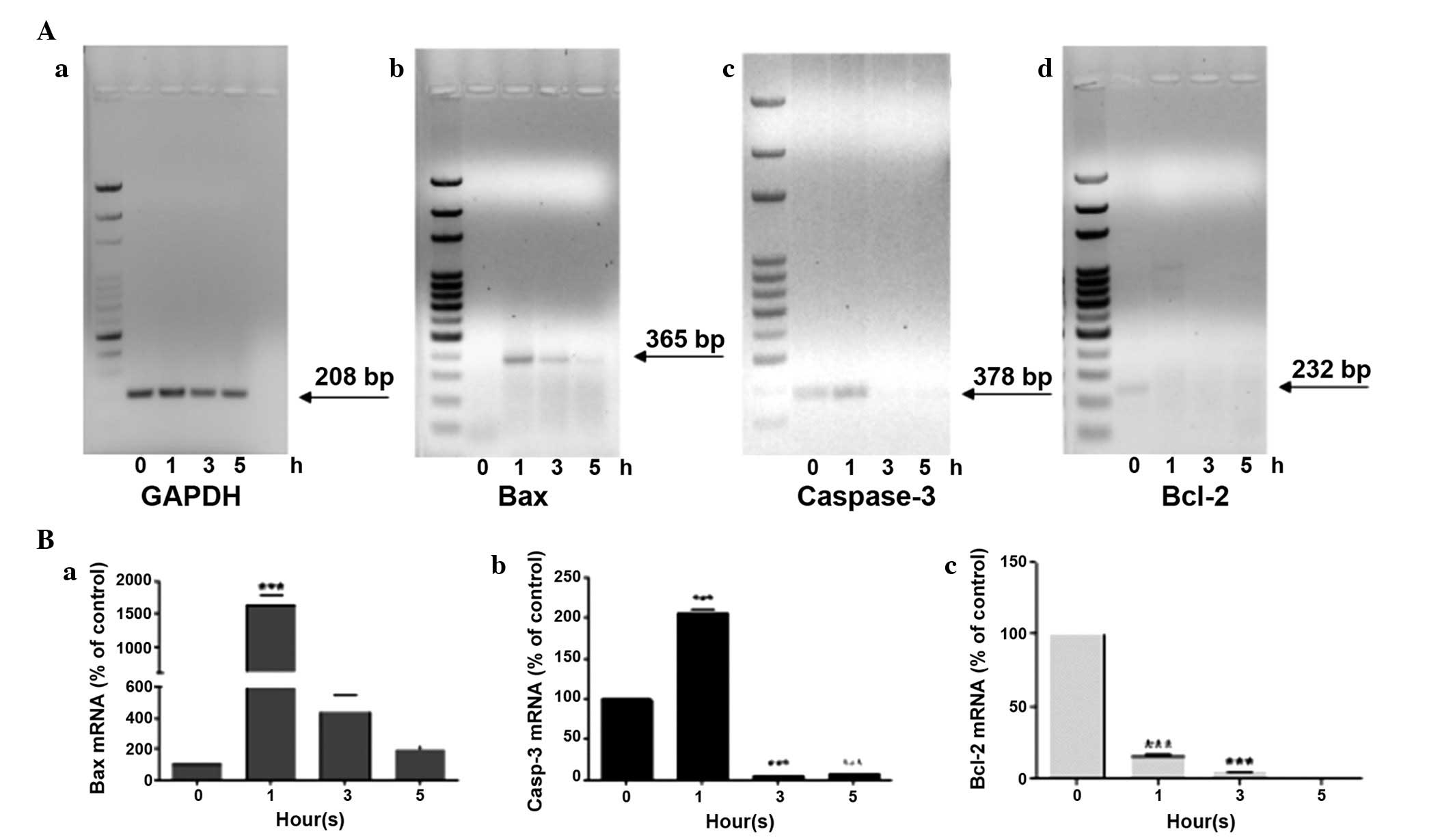Expression of early and late cellular damage markers by ARPE-19 cells following prolonged treatment with UV-A radiation
- Authors:
- Published online on: August 19, 2016 https://doi.org/10.3892/mmr.2016.5649
- Pages: 3485-3489
Metrics: Total
Views: 0 (Spandidos Publications: | PMC Statistics: )
Total PDF Downloads: 0 (Spandidos Publications: | PMC Statistics: )
Abstract
Pathological alterations to the retinal pigment epithelium underlie several eye diseases, which lead to visual impairment and even blindness. Exposure to ultraviolet (UV) radiation is associated with some skin and ocular pathologies; UV radiation may induce DNA breakdown and cause cellular damage through the production of reactive oxygen species (ROS), thus leading to programmed cell death. The present study aimed to investigate the production of ROS and the gene expression levels of anti‑ and proapoptotic proteins [B‑cell lymphoma 2 (Bcl‑2), Bcl‑2‑associated X protein (Bax) and caspase‑3] in human retinal pigment epithelial cells (ARPE‑19) treated with UV‑A for 5 h consecutively. The results demonstrated that prolonged exposure to UV‑A induced: i) Cell death, the decrease in cell viability was time‑dependent and reached statistical significance after 3 h; ii) a significant and substantial increase in ROS levels that remained constant for the duration of the experiment, the levels were significantly increased after 1 h of exposure; iii) an activation of apoptotic genes (Bax and caspase‑3) after 1 h of treatment, which was accompanied by a decrease in the anti‑apoptotic gene Bcl‑2; and iv) a loss of apoptotic signals and a rapid decrease in cellular viability after 3 h of consecutive treatment. These processes may trigger necrosis, which was observed in the cells following treatment with UV‑A for 5 consecutive hours. In conclusion, the present study is the first, to the best of our knowledge, to provide in vitro evidence regarding the sequence of events that underlie the cellular damage induced by prolonged UV‑A radiation, starting from the first 30 min of treatment. UV‑A radiation resulted in the activation of apoptotic events, and subsequently led to irreversible cell necrosis.












